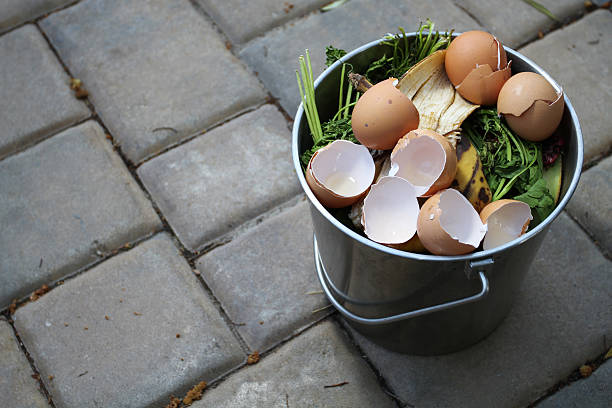Many people are unsure where they should throw away eggshells, but there is a simple answer.

Waste sorting is a great example of a system where there are more exceptions than rules. However, most of us have learned that food scraps should go into the biowaste bin. That’s right, unless they’re fatty, meaty or dairy. Some of you might be surprised by that, but it’s nothing compared to the rules for sorting eggs. As it turns out, getting rid of a rotten egg properly can be trickier than sorting lentils from chickpeas.
Rotten egg? Never throw it in the bio-waste!
In the waste industry, eggs are one of the most problematic types of waste. The issue is that the current sorting method is not particularly sophisticated, which can be a surprise to many. It turns out that an ordinary egg isn’t actually organic waste, at least not entirely.
In accordance with the principles of waste sorting:
- The eggshell should be placed in a brown bin – BIO waste;
- the yolk and white should go in the black bin – mixed waste.
The bio-waste is made into compost, which has to meet the relevant standards. To get the best results, bio-waste should be free of fats, meat and dairy products. So, things like bread with butter (fat), potatoes with sauce (fat and meat), cold cuts, bones and bones shouldn’t go in the bio-waste.
It seems that most of the leftovers after dinner should go in the mixed waste bin, not in the compost heap, as is the case in many Slovak houses and flats.
What is done with organic waste? Compost production
The way bio-waste collected by municipal services is treated can be broken down into three stages.
- After the rubbish is collected from the containers, the bio-waste goes to plants where it is shredded.
- It is then exposed to high temperatures, which speeds up the decomposition process and also allows some parts to be rid of dangerous micro-organisms and parasites.
- It is then mixed with the soil to form piles that ‘mature’ for 3 to 6 weeks.
Once the compost is ready, it’s separated, prepared for transport and sent to the recipients. This is a great way to recycle, and it helps make use of all that discarded food and other organic matter.
What needs to be thrown away in organic waste?
In a brown bin designated for BIO waste, throw away:
- fruit and vegetable peelings (with many exceptions)
- tea bags
- flowers
- leaves
- grass
- weeds
- crop residues
- rotten fruit
- tree trimmings
- sawdust
- wood chips
- shavings
It’s estimated that over 456,000 tonnes of food waste is thrown away in Slovakia each year. That’s according to the first pan-European monitoring of food waste, published by Eurostat at the end of 2022. The research was carried out in 2020. It’s a common misconception that large format hypermarkets and the supply chain are responsible for the biggest losses, but this isn’t the case.
So, that’s about 83 kg of this waste per person. Up to 78% of the total, or 65 kg per person, was produced by households. The most common items in the waste stream are bread and pastries, fruit and veg, dairy products, unfinished leftovers and unwrapped food.
As you can see, a lot of the uneaten food isn’t even suitable for composting and should go into the mixed waste stream. Given all this, and the fact that most of the waste is down to our everyday choices in the kitchen, it’s worth taking a moment to think about what we can do in our own homes.
Just a few straightforward changes at the national level could help us cut this by tens of thousands of tonnes.

